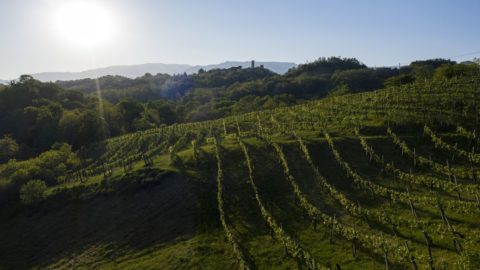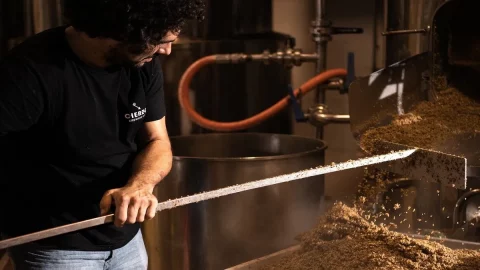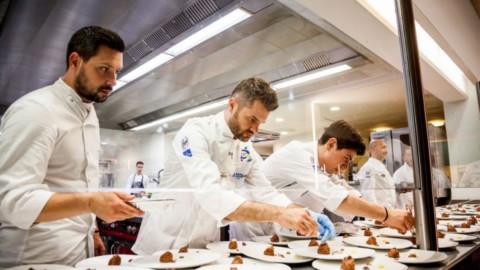After exceeding 17 million bottles in 2019 and achieving further double-digit growth in the first quarter of 2020 (+22% compared to April last year), Asolo Prosecco, the smallest of the three denominations of the Prosecco panorama, aims to present itself as a sort of “cru” of Venetian bubbles and launch one new strategy, aiming to strengthen the very strong link between the local tradition of Prosecco, the hills of the Asolo area and neighboring countries.
The data from theBva Doxa investigation commissioned by the Asolo Prosecco Consortium last year on an audience of Italian consumers of sparkling and sparkling wines, which demonstrates that the name of Asolo is known by three quarters of the interviewees (74%) and that a quarter has already visited the town (26%), while only 43% of the sample knows that Prosecco is produced on the hills of Asolo.
That the union between the name of Asolo and that of Prosecco is inseparable is attested by further data from the survey, which demonstrates that 32% of consumers would no longer be willing to consider the denomination among their purchasing choices if the name Asolo appeared without the Prosecco specification, while only 22% would drink it anyway. Conversely, 84% of the sample is willing to drink a wine called Asolo Prosecco.
“Research data – he explains Ugo Zamperoni, President of the Asolo Prosecco Consortium – confirm that combining the word Prosecco with the name of Asolo strengthens the territorial identity of the denomination, which is already deeply rooted. In fact, Asolo Prosecco is the full expression of the territory, it is culture, it is history. With this in mind, we have also created a new payoff, It's a whole other story, which aims to underline the bond of bubbles with the city that gives them their name and with its priceless cultural value".
To strengthen the sense of belonging to the Asolo area, the Consortium has adopted a new coordinated image, conceived by the Veronese studio Paffi. The name brand represents the Rocca, which has always been the symbol of the village of Asolo, and the outlines of the hills on which Asolo Prosecco is born, while the colors recall the golden ones of the wine and the facades of the old houses in the historic center of Asolo.
Asolo Prosecco was historically born on the sometimes inaccessible hills surrounding the ancient village of Asolo. A place rich in art and history, recognized as one of the most beautiful villages in Italy. Among these slopes, in the hilly "crus" dotted with other small villages with a consolidated peasant tradition, the vineyards from which a wine is produced that is the full expression of the territory fully included in the candidacy process of Monte Grappa as a Reserve find their ideal home. of the Biosphere according to the Unesco MaB (Man and Biosphere) program to be part of a global network of world-class excellence which in Italy already sees the presence of about twenty splendid environments such as, for example, the Po Delta, Monviso, the islands of Tuscany, the Sila or the Cilento.
The production area of Asolo Prosecco in the province of Treviso, at the foot of Monte Grappa, close to the Dolomites and Montello, embraces 18 Municipalities. In the hilly area of Asolo Prosecco the processes of erosion and modeling prevail. The more compact structures created rugged and rugged landscapes. The climate is typical of the temperate area.
Thanks to the triple effect of the high latitude, the trend of the hills and mountains and the proximity to the Adriatic, the summers are hot but not muggy and the winters moderately cold. The night-time temperature ranges are considerable, which favors the production of grape aromas. In May 2012, the Viticultural Zoning of Asolo was presented, which had as its purpose the analysis of the suitability of the territory to evaluate the viticultural-enological responses of the varieties that form the basis of the typical wines of the denomination. The main objective of the study was to increase the territorial identity of Asolo Prosecco and the elements that make it distinctive in the Prosecco panorama.
The goal of promoting sustainable and responsible viticultural techniques within the denomination was the lever that prompted the Consortium to adopt the Asolo Prosecco Method, a programmatic document that aims to safeguard the territory and landscape that distinguish the production area .
The Method consists of a guide divided into ten technical sheets that address the cultivation and agronomic processes in the vineyard starting from its birth, in a path that includes all stages of development and maintenance. To complete the Method there is a "country notebook" where you can record all the stages of development of the vineyard.
Founded in Roman times, Asolo developed considerably in the Middle Ages. In this period, between the XNUMXth and XNUMXth centuries, the Rocca was built on the top of Monte Ricco, still the symbol of the village, and it is no coincidence that it is included, together with the hills, in the logo of Asolo Prosecco and its Consortium, as a representation tangible of the sense of territorial belonging of the wine.
In the fourteenth century Asolo and its surroundings were annexed to the Serenissima Republic of Venice. It was in those years that excellent viticulture established itself: just think that the wines from these hills were taxed a third more because they were considered of the highest quality.





